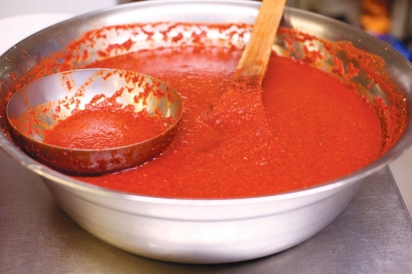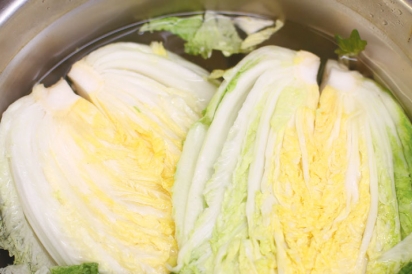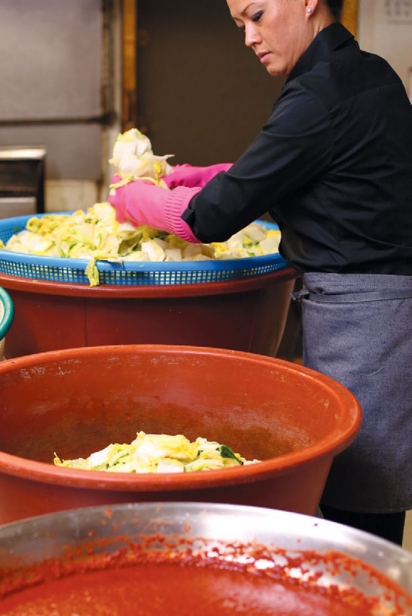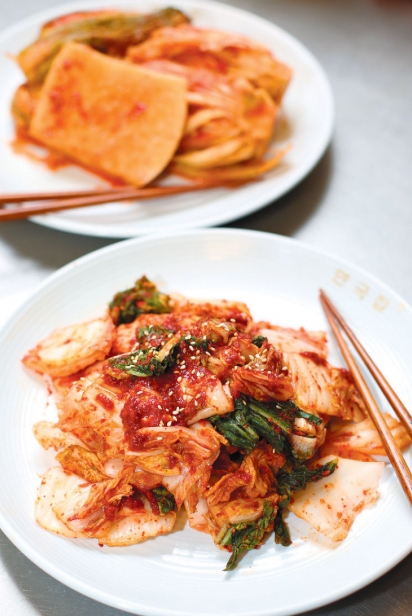Korean House Restaurant
Truth be told, until my visit to to Korean House Restaurant in Del City, I had never tried Korean food or the magical deliciousness that is kimchi. So I am taking this adventure, all my senses on point, into the Korean side of fermented foods as a newbie. Another great reason Edible OKC is important to our food community—my writing assignments get me out of a sometimes-trendy OKC bubble and into equally vibrant food scenes, but through adventure. This adventure led me across I-40 and into a grand taste of Korea that is kimchi.
Every continent on our planet utilizes some form of fermentation process in the cuisine. True though, a lot of countries “borrow” other countries’ fermented fares because they have become so immersed in the everyday fabric of our food-scape (like sauerkraut and yogurt), but most ancient cultures could not have made it this far without fermenting. Take the Koreans for example…
The Korean fermentation process, and more importantly producing kimchi, goes back for thousands of years. Like most cultural variances, different types of kimchi hail from different regions of Korea. Some areas produce the more familiar version that most of us know, which includes cabbage, dried shrimp, and daikon radish. Other regions may use pumpkin, dried fish, or heavier or lighter chilies for spice—it all depends on readily available ingredients from each region.
Now, I am unapologetically nerdy when it comes to food science so the whole fermentation process, especially for kimchi, has my mouth watering. So if this edition of Edible OKC is all about fermentation, then you better believe there’s going to be a little science lesson. Hold on to your hats, kids!
Kimchi’s signature deep tangy flavor comes from the lacto-fermentation process (along with a good dose of patience); sauerkraut and other traditional pickling traditions use the same method. Chef and coowner of Korean House Restaurant, Mrs. Bona Cho, best explained the process:
“We take the Napa cabbage, soak it in a salty brine, add other ingredients like daikon radish for texture, and flavoring ingredients such as dried shrimp, garlic, and ginger, and a little bit of sugar; you cannot miss the chili pepper powder either. The style of kimchi we have at Korean House is a simple Seoul style kimchi,” Bona explained to me
The first step of kimchi preparation is to soak the cabbage in a salt brine, which kills off the bad bacteria. The second step is when the remaining Lactobacillus bacteria in the cabbage converts sugars (from the radish, ginger, and added sucrose/table sugar) into lactic acid. Lactic acid is what gives the kimchi the “twang” (just like in sauerkraut).
“It takes a month to ferment. That’s when you get the good pickling and sour taste,” Bona went on to explain. “Some people like the younger kimchi, and some like the older kimchi. By the time we get to the bottom of the kimchi barrel, it is really powerful stuff. We then use the remaining kimchi juice to flavor soups and other dishes”.
Kimchi is a part of every meal, at home and at Korean House. Naturally the “at home” process and how Chef Cho prepares kimchi for Korean House are different, but the ingredients remain the same.
“We still use the Seoul style of Kimchi at home. Instead of chopping up the cabbage into bite-sized pieces like we do for the restaurant, we halve the cabbage and place those halves in jars to ferment. When we are ready for kimchi we just cut off what we need from the jar,” said Bona.
“In the restaurant, once a month when it is time to make kimchi, we prepare and chop between 100-200 heads of Napa cabbage. The rest of the ingredients are in large quantities too. Everything is hand mixed in tubs, and we place in large sealed containers to ferment.”
I went on to ask have they ever had to break into a bucket of kimchi before it was time?
“Oh no,” Bona laughed. “The restaurant has been around for 25 years, and I have been here for 13 years. I know how much we need to make and have ready for the customers.”
My taste buds were absolutely delighted dining at Korean House Restaurant. Richard, the Chos’ son and my waiter for the day, let me know that he and his parents had already figured out what they wanted me to try. Magic!
The first course came out, and it was something not on their regular menu. Kimchi dumplings, or kimchi mandu, were presented in three styles: the traditional steamed (similar to Chinese steamed dumplings), deep-fried, and pan fried, with a special dipping sauce on the side. All of the dumplings had beef forcemeat mixed with kimchi, enveloped in soft dumpling dough. They were perfect and delicate, and got my food engine revved for what was next.
Richard brought out the Banchan next. Banchan are the various small dish accompaniments to the main entree. Mine included the house kimchi, a sweet cucumber mix, a fermented turnip dish, soft chunks of delicious sweet potato, pickled daikon radish, and a stir fried seaweed, to name a few. My entree was a favorite at the Korean House (well, really Richard’s favorite)—the stir fried pork and kimchi Doobukimchi Bokum: perfectly tangy and crisp kimchi with thinly sliced pork loin, in a delicately sweet and “after spice” sauce. After spice is how I refer to the perfect way the spice of a well-balanced dish hits you on the back of the tongue. Not that sudden punch of fire you automatically receive with spicy peppered foods, but the subtler way a spice can give way to other flavors and sensations before bringing on a slight burn.
Speaking of the warm and gentle hug from food, you must try the Kimchi Stew Kimchi Chigae. It comes out in a clay pot, bubbling, and loaded with everything from tofu, mini rice cakes, bits of pork, to the delicious signature kimchi.
Culinary history and cooking methods of different cultures continually amaze and intrigue me. What started out a method of survival evolves into an art form, inherently tied to ingredients of our region and immediate environment. Fermented foods are just one aspect of food preparation in all cultures. What has lasted and what we crave hinges on what we share with one another and what seek out and try. Explore your world, my friends… and start in Oklahoma City!
Korean House 4813 SE 29th St, Del City, OK









